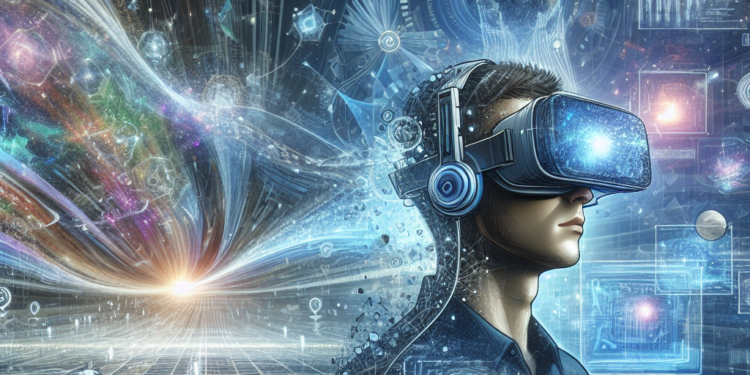Artificial intelligence (AI) and virtual reality (VR) are two cutting-edge technologies that are shaping the future of how we interact with the digital world. While VR has been around for decades, recent advancements in AI have greatly enhanced the virtual reality experience, making it more immersive and realistic than ever before. In this article, we will explore how AI is revolutionizing VR, and the ways in which it is enhancing our virtual experiences.
One of the main ways in which AI is enhancing VR experiences is through improved graphics and visuals. AI algorithms can create incredibly detailed and lifelike virtual environments, using techniques such as machine learning and neural networks to generate photorealistic images. This means that VR users can now explore virtual worlds that are indistinguishable from reality, with highly detailed textures, realistic lighting effects, and lifelike animations.
AI is also being used to enhance the audio experience in VR environments. By analyzing the spatial characteristics of sound, AI algorithms can create immersive audio environments that accurately reflect the user’s position and movement within the virtual world. This means that VR users can now experience highly realistic 3D audio effects, such as directional sound and reverberation, which make the virtual environment feel more immersive and lifelike.
Another way in which AI is revolutionizing VR is through the development of intelligent virtual characters and NPCs (non-player characters). AI-driven avatars can be programmed to interact with users in a more natural and realistic way, responding to gestures, facial expressions, and vocal cues. This makes the virtual environment feel more dynamic and engaging, as users can interact with intelligent virtual beings that behave and react like real people.
AI is also being used to enhance the user interface and user experience in VR applications. By analyzing user behavior and preferences, AI algorithms can personalize the virtual environment to better suit the individual needs and preferences of each user. This means that VR users can now enjoy a more tailored and customized experience, with interfaces and interactions that are optimized for their specific interests and abilities.
One of the most exciting developments in AI-driven VR is the creation of autonomous virtual worlds that can evolve and adapt in real-time. By using AI algorithms to simulate complex behaviors and interactions, VR environments can become dynamic and interactive spaces that respond to user input and stimulus. This means that VR users can now experience virtual worlds that are constantly changing and evolving, creating new and unexpected challenges and opportunities.
AI is also being used to enhance the social aspects of VR, by enabling intelligent virtual assistants and social bots that can help users navigate virtual environments and interact with other users. By analyzing user behavior and communication patterns, AI algorithms can create virtual companions that can provide guidance, assistance, and companionship in VR environments. This means that VR users can now enjoy more social and interactive experiences, with intelligent virtual beings that can enhance their virtual social interactions.
Overall, AI is revolutionizing the virtual reality experience in a number of ways, by enhancing graphics and visuals, improving audio and sound, creating intelligent virtual characters, personalizing user interfaces, creating autonomous virtual worlds, and enhancing the social aspects of VR. As AI continues to advance and evolve, we can expect to see even more exciting and innovative developments in the field of AI-driven VR, as these technologies continue to revolutionize how we interact with the digital world.













